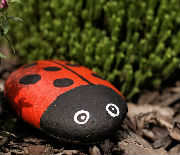
The use of flea treatments on our pets is essential for keeping them protected from harmful parasites, but incorrect use can lead to poisoning. Dogs and cats can suffer serious health problems from flea treatment poisoning caused by accidental overdoses, incorrect applications, or reactions to certain chemicals. Early detection of flea treatment poisoning can have a significant impact on the outcome, so pet owners should be aware of the symptoms.
Before selecting a flea treatment, especially if your pet has any existing health conditions, consult your vet. They can recommend the safest option based on your pet’s age, breed, weight, and overall health. Some pets, particularly the elderly, young puppies or kittens, and those with pre-existing medical conditions, may require special considerations when choosing flea treatments.
Check also: How to Get Rid of Fleas in the House
Table of Contents
Symptoms of flea treatment poisoning in cats
Flea treatments are essential for maintaining the health of your cat, but, in rare cases, they can lead to poisoning. Understanding the symptoms of flea treatment poisoning in cats is crucial for pet owners, as early recognition can help prevent serious health issues. We will explore the signs of poisoning from flea treatments, how to identify them, and what to do if your cat shows symptoms of flea treatment poisoning.
Common symptoms of flea treatment poisoning in cats
While most flea treatments are safe, treatment poisoning can occur, especially if the treatment is misapplied or the cat is sensitive to certain ingredients. Some of the common symptoms of flea treatment poisoning in cats include:
- Excessive drooling or foaming at the mouth: One of the first signs that something is wrong with your cat is often an increase in saliva production.
- Tremors or seizures: Flea treatments that are toxic to cats can cause neurological effects, including tremors or seizures.
- Vomiting or diarrhoea: Toxic reactions may trigger gastrointestinal distress, leading to vomiting or diarrhoea.
- Lethargy or weakness: A poisoned cat may become unusually lethargic or unable to stand or walk properly.
- Loss of appetite: A lack of interest in food or water can also be a key indicator of poisoning.
Any of these symptoms need to be addressed immediately. Poisoning severity may vary depending on the type of flea treatment, the amount ingested, and the cat’s overall health.
Cat flea treatment side effects
Not all flea treatments are the same. Some flea treatments contain ingredients that are highly toxic to cats. For instance, products containing permethrin, a common insecticide in flea treatments for dogs, can be especially harmful to cats. Always read the instructions carefully and ensure that the product you are using is specifically designed for cat fleas.
Cats are particularly sensitive to certain chemicals, and some flea treatments that are safe for dogs can lead to flea treatment overdose in cats. If your cat shows signs of poisoning from flea treatment, it may be due to improper use, such as applying a dog flea treatment to a cat or using an excessive dose.
Symptoms of flea treatment poisoning in dogs
The differences between flea treatment poisoning in cats and flea treatment poisoning in dogs primarily stem from differences in their physiology, how they metabolise chemicals, and the types of flea treatments that are safe for each species. A dog flea treatment can be poisonous if used incorrectly or with the wrong product.
Dogs have a higher tolerance for some of the chemicals in flea treatments, especially permethrin, but they can still experience poisoning if exposed to the wrong product, an overdose, or a product not designed for canines. For instance, when dogs are exposed to flea treatments intended for cats or other animals, they may show signs of poisoning, but their tolerance is generally higher than that of cats.
In dogs, symptoms are similar but tend to be less severe due to their higher tolerance. Dogs may experience vomiting, diarrhoea, drooling, lethargy, muscle tremors, or seizures, but the severity will vary depending on the size of the dog and the dosage of the treatment.
How to prevent flea treatment poisoning in cats and dogs
To prevent flea treatment poisoning in cats and dogs, it’s important to take certain precautions, follow proper usage guidelines, and choose the right products for each pet.
- Choose a flea control product carefully: Always use flea treatments specifically designed for cats. Never apply dog flea treatments to cats, as many ingredients (like permethrin) are toxic to felines. Check the product label carefully to ensure it is safe for cats and follow the dosage instructions precisely. Similarly, only use flea treatments labelled for dogs. While dogs tend to have a higher tolerance for certain chemicals, using a product meant for another animal species (such as cats) can lead to flea treatment poisoning.
- Consult a veterinarian about the product you have chosen. Veterinarians treat hundreds of cats and dogs for permethrin poisoning each year and know exactly which chemicals are unsafe for your pet.
- Research the brand of the flea product on the web. Try using search terms such as ‘poisoning’ and ‘toxic’. Many user-generated forums have discussions on different popular brands. Reading about another pet owner’s experience could save your cat or dog’s life!
- Consider your pet’s weight when choosing the proper dosage. Good advice is not to split one “large dog” dose in half for two small dogs or combine two “small dog” doses for one large dog.
- Avoid using chemical flea control products on elderly or pregnant pets.
- Wait 6-8 weeks between flea treatments to avoid toxicity.
- Watch your pet carefully after applying the product. Try to keep it from grooming itself too much and look out for the following flea treatment poisoning symptoms.
- If you notice any of these symptoms, take your pet to a veterinarian ASAP. The brain damage that the poison might cause depends on your reaction speed!
In case of flea overdose on your pet immediately contact your veterinarian. Do not wait for symptoms to develop—seek help right away. Keep the product packaging with you to provide information to the vet for appropriate treatment.
What flea treatment is safe for pets?
It’s hard to pretend that there’s a way to beat a serious flea infestation without the use of insecticides. Nonetheless, pet owners shouldn’t rely on topical flea control products but rather employ a holistic approach.
Combine the use of flea drops with a weekly scrub and vacuum of carpets, furniture, pet bedding, as well as laundry. In acute situations, flea treatment may be applied to your property, with your pet outside of the property for at least 2 hours.
Some flea treatments are formulated to target both fleas and ticks, so if you’re dealing with both types of parasites, these treatments are suitable. Look for products that specify they provide protection against both fleas and ticks, such as certain topical treatments, oral medications, or collars.
This kind of treatment lets the pesticide dissolve and clear out before it comes into contact with any living beings, unlike topical flea treatments with fat-soluble compounds like permethrin, which absorbs into the pet’s skin.
How to protect cats and dogs from fleas
By combining these strategies, you can provide comprehensive flea protection for your pets and prevent flea infestations:
- Inspect your pet for fleas or flea dirt (small black specks) during grooming sessions. Pay special attention to areas where fleas like to hide, such as around the neck, under the tail, and in the armpits.
- Use a flea comb to carefully remove any fleas or flea dirt from your pet’s coat. Flea combs are particularly useful for cats, as they can be gentle on their fur and help remove fleas effectively.
- Give your pet a bath regularly and wash their bedding at least once a week.
- Maintain high hygiene in your property and use a vacuum cleaner for your floors, upholstery, other furniture, beds and corners where fleas might have laid their eggs;
- Trim grass and trees in your backyard. Fleas can thrive in outdoor areas, especially in shaded, moist environments. Treat your yard with flea-control products, such as sprays or granules, to prevent fleas from infesting your pet when they go outside.
Protect your pet with the right flea treatment
Despite the necessity of flea treatments for protecting our pets from parasites, they must be used safely and correctly to prevent poisoning. To reduce the risk of poisoning, you should be vigilant for signs of adverse reactions, such as skin irritation, vomiting, or lethargy, and use the right product for your pet’s size, species, and health condition.
Follow the manufacturer’s instructions, consult your veterinarian if you have concerns, and monitor your pet closely after treatment. Flea treatments can provide effective protection for your pets while keeping them healthy and safe.
FAQ’s about flea treatment and pets
- Do cats feel unwell after flea treatment? – Cats may feel unwell after flea treatment due to side effects like skin irritation, vomiting, or lethargy, especially if the product is not suitable for them.
- How long does flea medicine poisoning last? – Flea medicine poisoning can last from a few hours to several days, depending on the severity of the reaction. Immediate veterinary attention is crucial.
- Can flea treatment make my dog unwell? – Yes, flea treatments can make dogs unwell, especially if misapplied or if the product is not suitable for their breed, size, or age. Symptoms can include vomiting, drooling, or lethargy.
- How to recognise flea treatment poisoning in dogs? – Symptoms of poisoning in dogs include excessive drooling, vomiting, tremors, lack of coordination, and lethargy. If these occur, seek immediate veterinary care.
Image source: Monkey Business Images/shutterstock.com










Leave a Reply